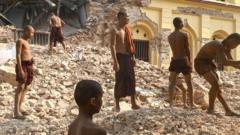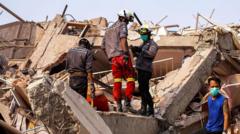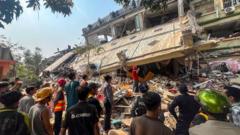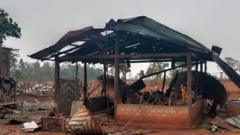A recent 7.7-magnitude earthquake in Myanmar has resulted in over 1,000 fatalities and extensive destruction, including the collapse of a high-rise in Bangkok. This article explores the geological factors behind the earthquake, its seismic energy's travel across long distances, and the structural weaknesses that led to the building's failure.
The Far-Reaching Impact of Myanmar's Earthquake: Causes and Consequences
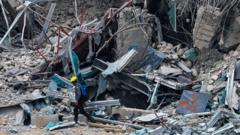
The Far-Reaching Impact of Myanmar's Earthquake: Causes and Consequences
An in-depth analysis of the Myanmar earthquake's geological origins and its unexpected impact on structures in Bangkok, shedding light on construction vulnerabilities.
The recent devastating earthquake in Myanmar, registering a magnitude of 7.7, has had fatal consequences, claiming more than 1,000 lives and resulting in significant structural damage. While Myanmar is well-known for its seismic activity due to its geographical location at the convergence of four tectonic plates—the Eurasian, Indian, Sunda, and Burma microplates—Bangkok is not recognized as an earthquake-prone area. Surprisingly, the seismic event caused a high-rise building in Bangkok to collapse despite the city's distance of over 1,000 kilometers from the epicenter.
Understanding the earthquake's causes involves examining the tectonics at play in Myanmar. The upper crust of the earth features multiple tectonic plates that continuously shift. These movements can create faults, such as the Sagaing fault, which runs about 1,200 kilometers through Myanmar. The recent earthquake was categorized as a "strike-slip" event, meaning that two tectonic blocks shifted horizontally relative to one another, allowing friction to build until it was released as a powerful earthquake.
The significant energy released during the earthquake was amplified by its shallow depth of only 10 kilometers, which led to intense shaking felt far from the epicenter. According to geologists, the earthquake delivered energy comparable to that of the atomic bomb dropped on Hiroshima, with the type of fault facilitating its widespread impact.
Despite Bangkok’s geology generally being sturdy against seismic activities, the construction methods utilized in the city can determine how such disturbances are experienced. The soil composition in Bangkok can amplify seismic waves, resulting in heightened ground shaking. Interestingly, only one structure in Bangkok, an unfinished skyscraper in the Chatuchak district, triggered concerns due to its collapse, while other buildings swayed but remained standing.
Historically, Bangkok's structural safety guidelines for earthquake resistance were not stringent before 2009, placing older buildings at a greater risk. However, the building that collapsed was newly constructed, prompting scrutiny over its design. Experts indicate that the choice of a "flat slab" construction technique—where floors rest directly on vertical supports—compromised the building's integrity during seismic events.
In Myanmar, the situation is considerably more complex due to systemic challenges such as poverty and political instability, which have hindered the enforcement of construction codes. Many buildings in earthquake-prone regions like Mandalay lack proper earthquake resistance, often leading to catastrophic failures during seismic events. The ground conditions, particularly near the Ayerwaddy River, further increase the vulnerability of structures due to the risk of liquefaction and landslides.
As recovery efforts continue, experts underscore the necessity of improving construction practices in both Myanmar and regionally significant cities like Bangkok. As the possibility of aftershocks and further structural damage remains, addressing these vulnerabilities can mitigate risks in the future, ensuring that communities are better prepared for the unpredictable nature of earthquakes.

